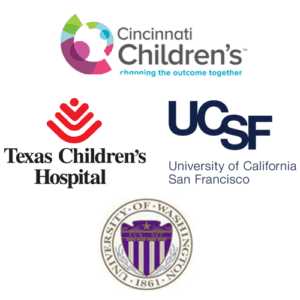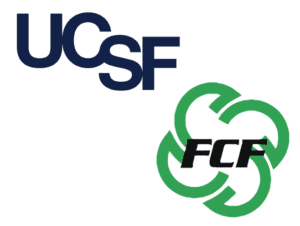Below are descriptions of FCF-funded projects designed to help further define the FLC patient base.
Project summaries: Epidemiology efforts
Timeframe: 2023 - 2025
Goal: Understand the true incidence, accuracy of diagnosis, and optimal treatments for FLC
Principal Investigator: Roshni Dasgupta, MD of the Cincinnati Children's Hospital Medical Center
Co-investigators:
- Soo-Jin Cho, MD, PhD of the University of California, San Francisco
- Kimberly Riehle, MD of the University of Washington
- Dolores López-Terrada, MD, PhD of Texas Children’s Hospital

Study overview: In previous work, the Pediatric Surgical Oncology Research Collaborative (PSORC) collected and analyzed detailed records of 262 patients under age 20 diagnosed with hepatocellular cancers, assembled from 19 different hospitals and covering the years 1990 to 2017. This represents the richest available source of data on pediatric liver cancers. They found that 119 (45%) of the tumors had been classified as FLCs, 110 (42%) as conventional HCCs, and the remainder mainly as “hepatocellular neoplasms-not otherwise specified” (HcN-NOS) (12%). The latter tumors are generally hepatoblastomas (a distinct class of liver cancer most often seen in very young children), but with some features of HCC. However, the classification of each tumor in the collection was based on the diagnosis originally made at the treating hospital.
Because evidence suggests that FLC is frequently misdiagnosed in clinical practice, the PSORC team requested funding from FCF to carry out centralized pathology review of the 262 tumors to confirm the actual number of FLC cases versus other types of liver cancers. They also proposed to carry out molecular analyses of the tumors using methods that were not yet readily available in hospital labs when the bulk of the specimens were initially assessed.
The goals of the study are to:
- Determine the accuracy of diagnosis of FLC vs HCC in pediatric patients. Expert pediatric liver pathologists, led by Dr. Soo-Jin Cho (UCSF), will carry out a centralized histopathologic review of specimens curated within the PSORC multi-institutional database, of which approximately 45% are FLC based on initial diagnoses at the contributing hospitals.
- Perform molecular analysis of pediatric FLCs, HCC, and HCN-NoS. Studies led by Dr Lola López-Terrada (Texas Children’s Hospital/Baylor) will apply the current state-of-the-art standard for molecular pathology of FLC, including:
- Immunohistochemistry for CK7 and CD68
- Confirmation of the DNAJB1-PRKACA gene fusion by nucleic acid sequencing (primarily of spliced mRNA) and/or a microscopy-based method (fluorescence in situ hybridization).
If successful, the study could:
- Confirm the histological classification of FLC versus other rare liver cancers found in the same age group, and correct errors likely to exist in the valuable Pediatric Surgical Oncology Research Consortium liver tumor collection and database. This will guide the standardization of identification of FLC by local pediatric pathologists. It also will reinforce the recognition of FLC as a distinct disease which should be clinically managed in that way.
- Lay groundwork for personalized molecular analysis of FLC that is likely to provide more accurate prognoses and point to the most appropriate treatment strategy for each individual patient.
- Provide important supporting evidence for ongoing efforts to obtain a unique ICD-10-CM code for FLC.
Timeframe: 2021 – 2022
Goal: Develop updated estimate for US national incidence of FLC
Investigators: John Gordan, MD, PhD (UCSF); Travis Zack, MD (UCSF); and Kurt Losert (FCF)

Study overview: Rare diseases like fibrolamellar are often poorly understood because of the difficulty in assembling accurate patient cohorts and the lack of ICD billing codes specific to the disease. The most cited study of national incidence of FLC, using data from the National Cancer Institute’s Surveillance, Epidemiology, and End Results (SEER) Program, reports an incidence of approximately 0.02 per 100,000. However, this rate is significantly lower than might be expected based on observations from clinical practice which indicate that the incidence of FLC in the United States equals approximately 1% that of HCC. The main goal of this study was to analyze and combine data from nationally aggregated billing record datasets and major healthcare organization’s electronic medical records to re-estimate the national incidence of FLC.
Key Findings: This study used a unique approach that combined “narrow but detailed” EMR data with “broad but less specific” national payer billing information to define FLC incidence. The analysis suggests that FLC’s incidence rate is likely 5-8 times higher than the 0.02 per 100,000 rate reported in the SEER Program statistics. While this approach might be artificially inflated by long-distance referrals of FLC patients to major medical centers, even the lowest estimate made was still five times higher than current SEER data after adjusting the analysis for referral distances.
The study also included an analysis of clinical trial data which identified a higher level of hyperammonemia in FLC patients than is currently recognized in clinical practice, suggesting that hyperammonemia is an underappreciated source of comorbidity in FLC patients. By employing unsupervised machine learning on clinical laboratory data from patients with hyperammonemia, it also found that FLC-associated hyperammonemia mirrors metabolic dysregulation in urea cycle disorders.

The results of the effort were published in NPJ Precision Oncology in March 2023. Click here to read or download the complete article.
